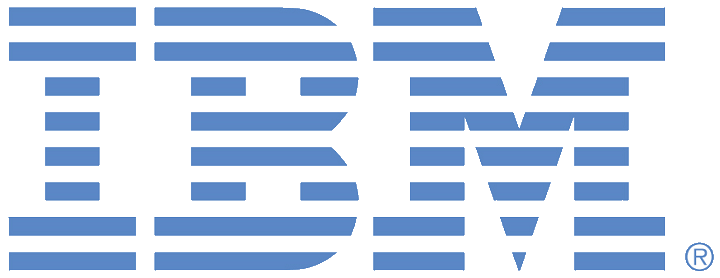
AI won’t replace people; instead, an AI-augmented workforce will likely develop, and those that fail to embrace the technology will be left behind, according to The CEO’s Guide to Generative AI, a digital book from the IBM Institute for Business Value.
But IBM warns that many companies are moving ahead with GenAI developments without fully considering employees in their strategy. The book cites research that indicates 28% of CEOs have assessed the impact of GenAI on their workforce, 43% have reduced or redeployed the workforce due to the technology, and 46% have hired supplementary talent.
The book outlines three core actions for CEOs to navigate talent and skills management considerations. The first is to make people, not technology, central to a GenAI strategy. The second is to focus expectations on what you want to achieve from GenAI and what will benefit your business. The third is to unlock the creativity that GenAI facilitates; this means encouraging a culture of creativity and adapting how people work to achieve it.

Register for Acceleration Economy’s Cloud Wars CEO Outlook 2024 Course, now available. Featuring exclusive interviews on strategy, AI, and customers with the CEOs of Cloud Wars Top 10 companies.
From a customer service perspective, the book encourages CEOs to empower agents with GenAI tools, use the technology to get deeper customer insights, and use the customer service function as a testbed for GenAI innovation by experimenting with the marriage of automation and human activity.
IBM research finds that 62% of executives say GenAI will disrupt how their organization designs experiences. This means capitalizing on GenAI to create acutely personalized experiences for customers and staff.
AI-Powered Data
IBM outlines the technological foundations required for GenAI to work effectively and securely. This requires both cultural change and technology adoption. These requirements are split across five core areas: platforms, data, and governance; innovation and ecosystems; application modernization; responsible AI and ethics; and tech spend.
Ask Cloud Wars AI Agent about this analysis
Regarding platforms, one of the most interesting takeaways is that established businesses need to be nimble like startups when approaching GenAI and, instead of incrementalism, design an AI platform that can drive success. It recommends that companies focus on data integration, openness, and interoperability, as well as tapping technologies such as task mining and process mining to maximize data’s impact and reduce the impact of silos.
The IBM analysis recommends governance as a board-level priority while suggesting that AI and governance responsibilities require a dedicated executive. This dedication to governance also reinforces the book’s stance on responsible AI and ethics, which it says must be baked into every data and AI investment.
Ultimately, when it comes to modernizing application architecture, IBM suggests going for the “low-hanging fruit” — those applications that have already been modernized to show the potential of GenAI.
IBM research finds that top executives expect the most significant impact on app modernization projects in marketing, customer service, and information security.
Yet, according to IBM, budgeting for GenAI is complex. To that end, the book suggests allocating spend based on growth potential, not just short-term gains, and advises that spending on GenAI doesn’t need to be equally distributed across organizational areas.
It calls for tapping the partners ecosystem to support GenAI initiatives and notes that, in some cases, there’s a need to reassess existing relationships and focus on quality over quantity.
AI-Fueled Operations
With the potentially expansive impact of GenAI, the book’s final section focuses on functions CEOs can prioritize to drive the greatest impact on company operations, including supply chain, marketing, cybersecurity, and sustainability.
From a supply chain perspective, one of the most interesting takeaways is the idea of deploying AI assistants into a company’s supply chain with the goal of increasing the synergy between your organization and your partners while enabling quicker access to data. Beyond this, GenAI can be deployed to pre-empt the next major disruption by surfacing analytical insights in a timely way.
In marketing, IBM expounds on the massive range of use cases that GenAI can support. Of particular interest is the notion that GenAI can help overcome pain points in the customer journey by enabling marketing teams to direct specific prompts as and when they are needed and collect data from other teams, such as sales, to get a complete picture of each customer.
Cybersecurity is a significant concern for every organization, and IBM echoes its stance on AI-powered data by advising CEOs to secure the entirety of the AI pipeline. CEOs are in alignment with this guidance: 94% of executives surveyed say securing AI software before deployment is essential. The book also explores the potential of using GenAI to unearth new threats.
The overriding benefit of GenAI is actionable insight. IBM discusses how these insights can be used to make better decisions regarding sustainability as well as productivity. Again, there is an emphasis on the partners ecosystem and, in this case, how important partners can be in using GenAI to achieve sustainability goals through a process of co-creation.
Closing Thoughts
IBM uses the phrase “lay the groundwork for greatness” to explain how all of the recommendations made in the book can lead to powerful business outcomes.
One overriding message that CEOs must heed is the idea that leadership can’t be automated. People still make the critical decisions. In fact, 90% of CEOs will lean on their C-suite leaders to shape their organization’s adoption of GenAI.










